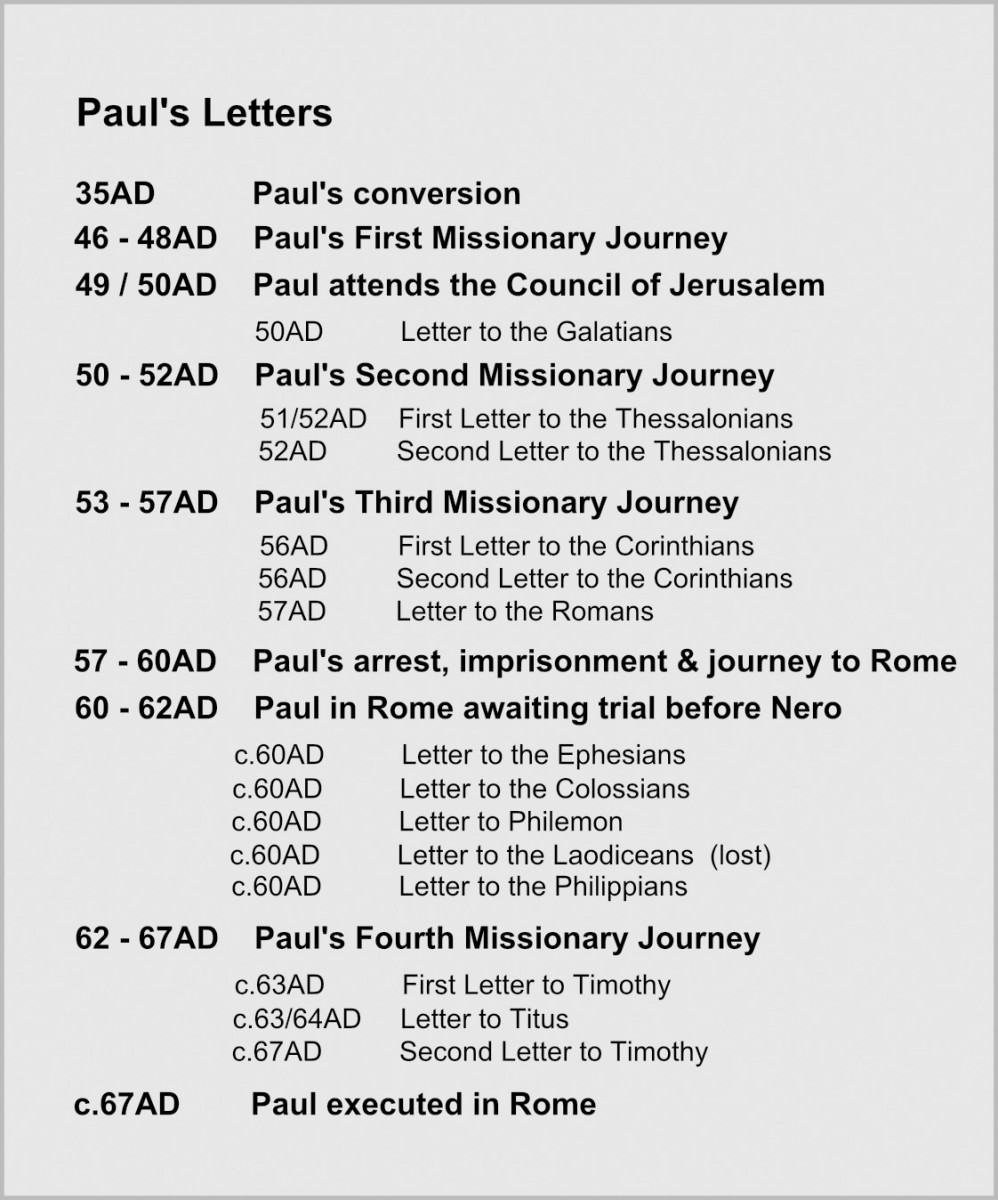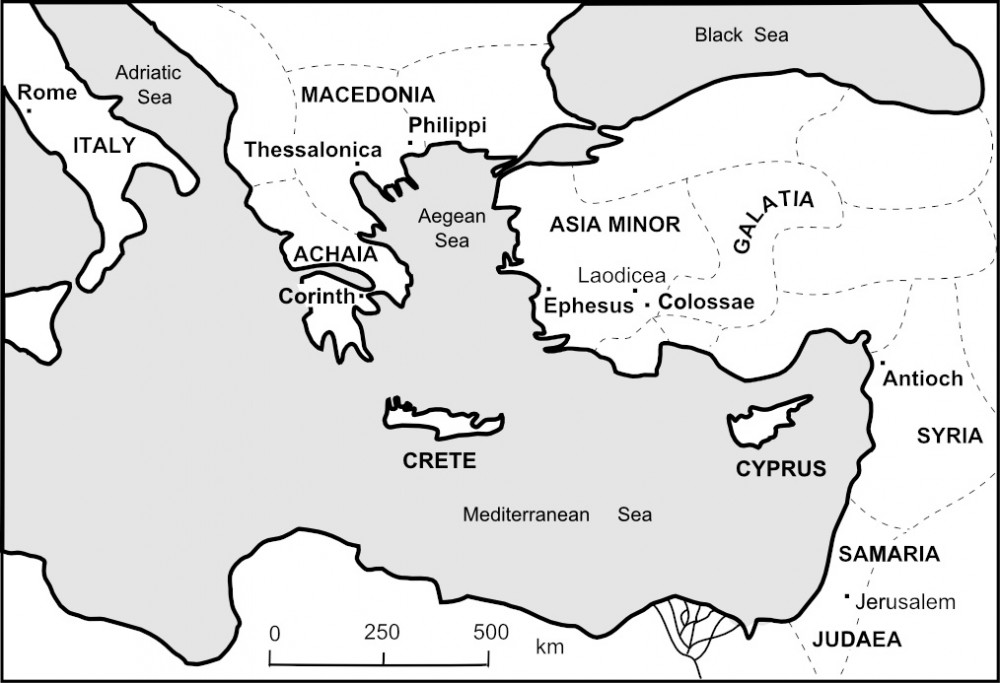The remaining books of the New Testament contain letters written by early Christian leaders and taken by messengers to the new churches recently established across the Roman world. The letters – from Paul, Peter, James, John and Jude – were written to encourage believers in the face of persecution, to explain the Christian faith and to point out its relevance to everyday life.

Fig. 8 The Dates of Paul's Letters
Paul's Letters
Paul dictated his letters to an amanuensis (a scribe) who attempted to copy his words verbatim (using his exact words). The scribe would have been a Christian colleague such as Tertius (who scribed Paul’s Letter to the Romans – see Romans 16.22), Silas (who also scribed for Peter – see 1 Peter 5:12) or Timothy (see 1 Thessalonians 1:1, 2 Thessalonians 2:1, 2 Corinthians 1:19, Philippians 1:1, Colossians 1:1 & Philemon 1:1).
Paul’s letters are not always easy to follow in the original Greek. Paul started life as a Jewish Pharisee, thriving on intense religious debate and steeped in obscure arguments about the Jewish law. It’s hardly surprising that, on occasions, his religious arguments are difficult for us to follow today. Even Peter (who was thoroughly conversant with the Jewish religion) comments that Paul’s letters contain some things that are ‘difficult to understand’ (see 2 Peter 3:15-16).
The order in which Paul's letters appear in The Bible Journey
Reading Paul’s thirteen letters in chronological order – the order in which they were written (rather than the order in which they appear in the New Testament) – helps us to understand why they were written, and provides us with the correctly sequenced story of the development of the early Christian church.

Map 27 Letters to the New Churches in the Eastern Mediterranean
